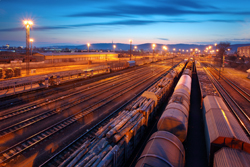New loading units harmonise transport networks
Advanced logistical solutions are needed to optimise Europe’s transport system and increase the efficiency of individual modes of transport by enabling road vehicles, railway wagons and vessels to carry more freight. The Trimotrans project developed new loading units that can be used across different modes of transport. Road transport is becoming increasingly congested, whereas the railway and inland waterway transport systems remain underutilised. Therefore, the Trimotrans initiative developed a new intermodal loading unit that could take the pressure off of Europe’s roads by facilitating the transport of goods on rail networks and inland waterways. The almost limitless range of goods to be transported and the number of existing loading systems provided a challenge to project partners. Their response was to develop a universal unit with the dimensions of 2 550 x 2 900 x 7 450mm. The receptacles were in accordance with European Commission recommendations for intermodal loading units and International Organization for Standardisation (ISO) requirements for containers. Project partners also studied the viability of a unit with an alternative body length of 13 600mm. Different handling requirements meant that two different units were designed and tested: the Swap Version and the Roll-off Version. The two universal receptacles were designed with dedicated adaptors and mobile internal fixtures.Maximum ease of transport between road, rail and water was achieved thanks to the harmonisation of handling procedures through the development and use of tailored adaptors for lifting and shifting operations. The adaptors were compatible with existing hook-lifting systems and spreader technology. The new loading units developed under the auspices of the Trimotrans project will help reduce the amount of freight traffic on Europe’s roads by increasing the utilisation of rail and waterway networks. Furthermore, the units will enable transport chains to become more efficient by avoiding unnecessary changes at transport facilities through improved handling.







